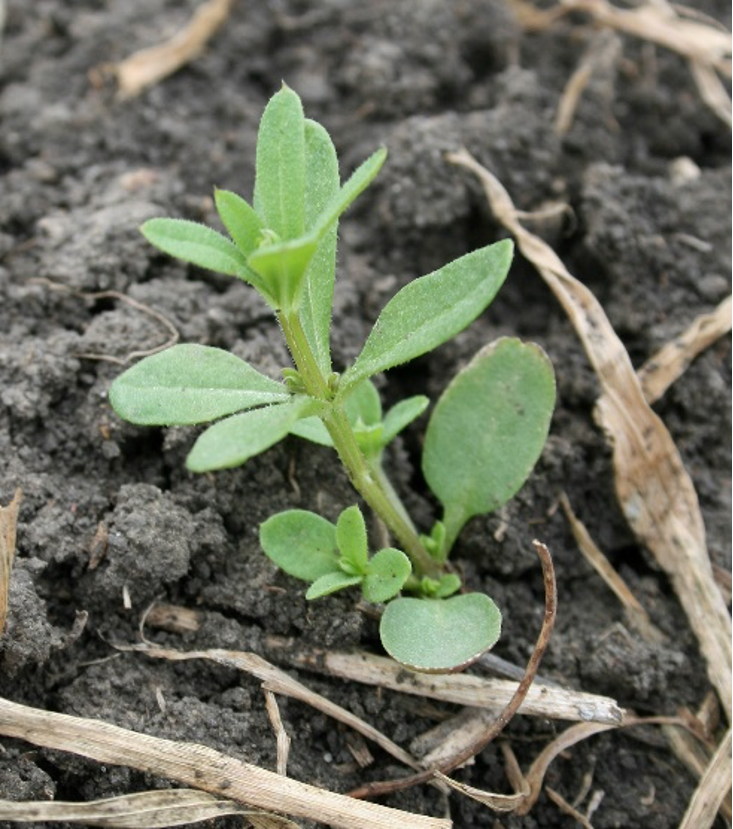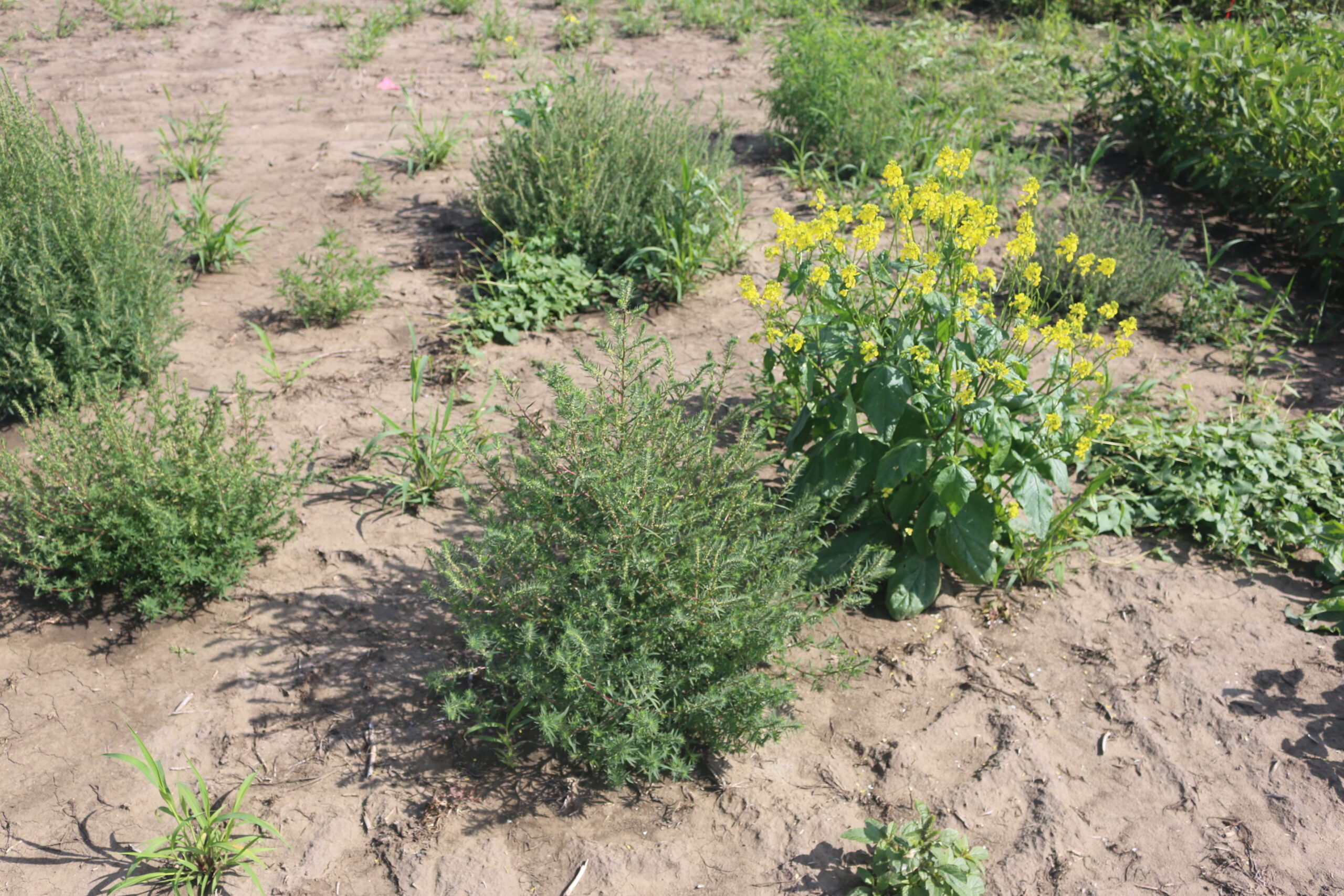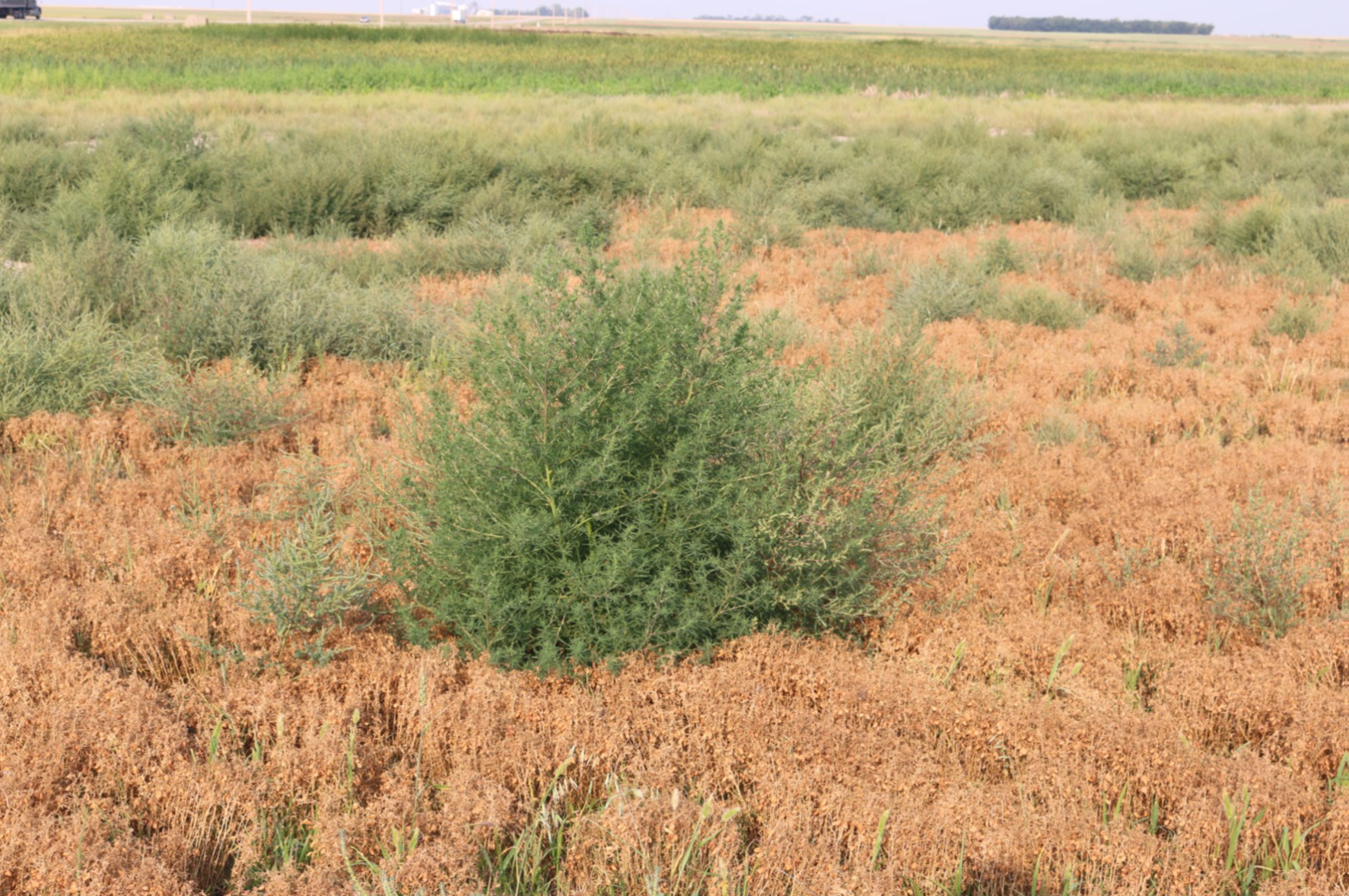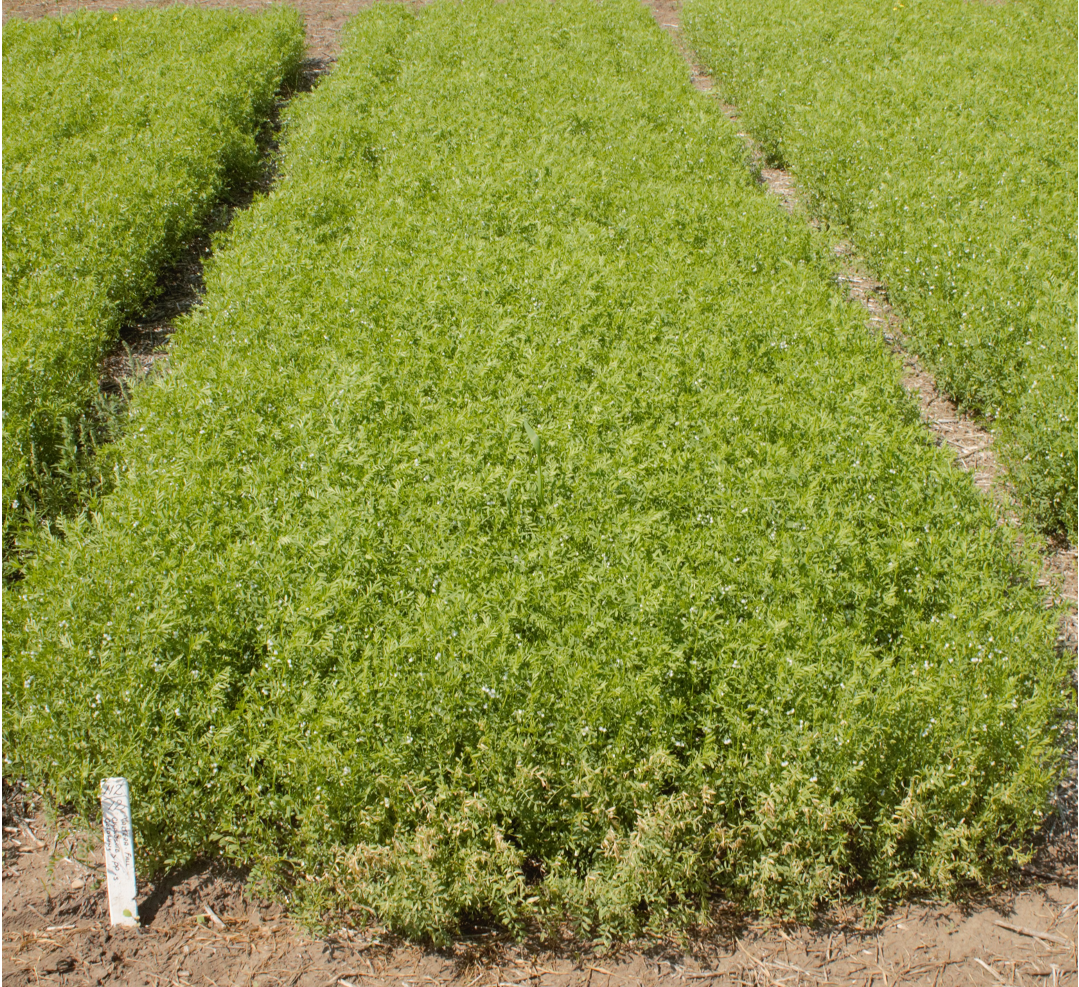By Kaeley Kindrachuk, Crops Extension Specialist
Used with permission from the Saskatchewan Ministry of Agriculture
Cleavers are not a weed that every producer in Saskatchewan deals with, but the weed is slowly spreading throughout the province. When the first weed survey in 1970 was conducted, cleavers were ranked #40. In the last survey in 2014/15, cleavers had moved up to rank #7. Since it is spreading through the province, it is helpful for producers to know more about it, and how to control it if they find it on their farm. Galium species (cleavers) include two different species, Galium aparine and Gallium spurium. These species are difficult to tell apart, but past research in Saskatchewan has indicated that the dominant species is G. spurium (false cleavers). This species is better adapted to growing on the Prairies whereas G. aparine is better adapted to woodland areas.
The conditions required for cleavers to germinate can range:
- Temperature/Timing: Germination occurs mid-spring (beginning of May) and decreases as temperatures reach higher than 20°C.
- Seed Depth: Germination of cleaver seed is shallow – the optimum depth is 8-15 millimetres (mm), and they do not usually emerge from more than 40 mm. Germination is best in darkness, but some older seeds can germinate in low light conditions as well.
- Longevity: While cleaver seed may remain viable in ideal conditions for up to six years, seed viability from 2-3 years is most common.
Considerations for control with herbicides:
- Timing: As with most weeds, controlling them when they are small is more effective, either post-harvest or in a pre- or post-seed herbicide application. Newly emerged cleavers can be managed after harvest or in the spring with pre-emergent applications. Use of soil residual products can also help control cleavers as they are germinating and prior to emergence. Cleavers can also overwinter as winter annuals. These larger cleavers will require higher rates of glyphosate and/or tank mixes for effective control in a spring burnoff. These weeds are also larger in the spring, so glyphosate rates may need to be increased and tank mixes used for pre-seed applications.
- Herbicide Resistance: In the 2014/15 herbicide resistant weed survey, 20% (12 of 62) fields had Group 2 resistant cleavers. The majority of the resistant cleavers were found in northern areas of the province. Resistance is still increasing, and the number is expected to be higher in the next herbicide resistant weed survey. The most recent survey is in progress and results will be available in coming years. When Group 2 resistance was first discovered in Alberta in 1996, this species was also found to be resistant to quinclorac (Group 4). Group 4 resistance does not seem to have persisted and spread in the same way that Group 2 resistance has. To manage resistance, use multiple herbicide groups that have activity on cleavers. Three-way mixes are more effective than two-way mixes and help to reduce the development of resistance.
- Plant Characteristics: Cleavers are simple to identify once you know what you are looking for. Their tell-tale characteristics are whorled leaves on a square stem. The plant itself feels sticky, and will attach to clothing. Plants will climb up the crop canopy making harvesting difficult.
Mechanical Control Options
Since exposing seeds to light may inhibit germination (depending on intensity and duration) and burying seeds encourages germination, tillage may not be a very effective option. Cleavers are not a good candidate for clipping as the weed uses the crop to grow vertically and produces seeds within the canopy (instead of above the canopy). However, they may be a good candidate for harvest weed seed management since the weed seeds tend to be harvested with the grain. The most effective way to lower the seed bank is harvest weed seed management where the weed seeds are destroyed after harvest either through gathering in chaff and removing from the field or destroying the viability of the seed as it is put through seed destructors. This option may gain traction in coming years as weed destructors become more popular in Saskatchewan.
Cleavers were traditionally limited to the Black soil zone, but now are spreading into newer areas in the Dark Brown soil zone each year. Each cleaver plant may produce up to 300-400 seeds, but under optimal circumstances can produce up to 3,500. Cleaver seed is very small and considered a contaminant in seed, so ensure you are using clean seed each spring. Scout fields regularly to keep an eye on the weed populations.
For more information:
- 2021 Guide to Crop Protection
- Contact the Crop Protection Laboratory about Herbicide ResistanceTesting
- Contact your local Crops Extension Specialist



